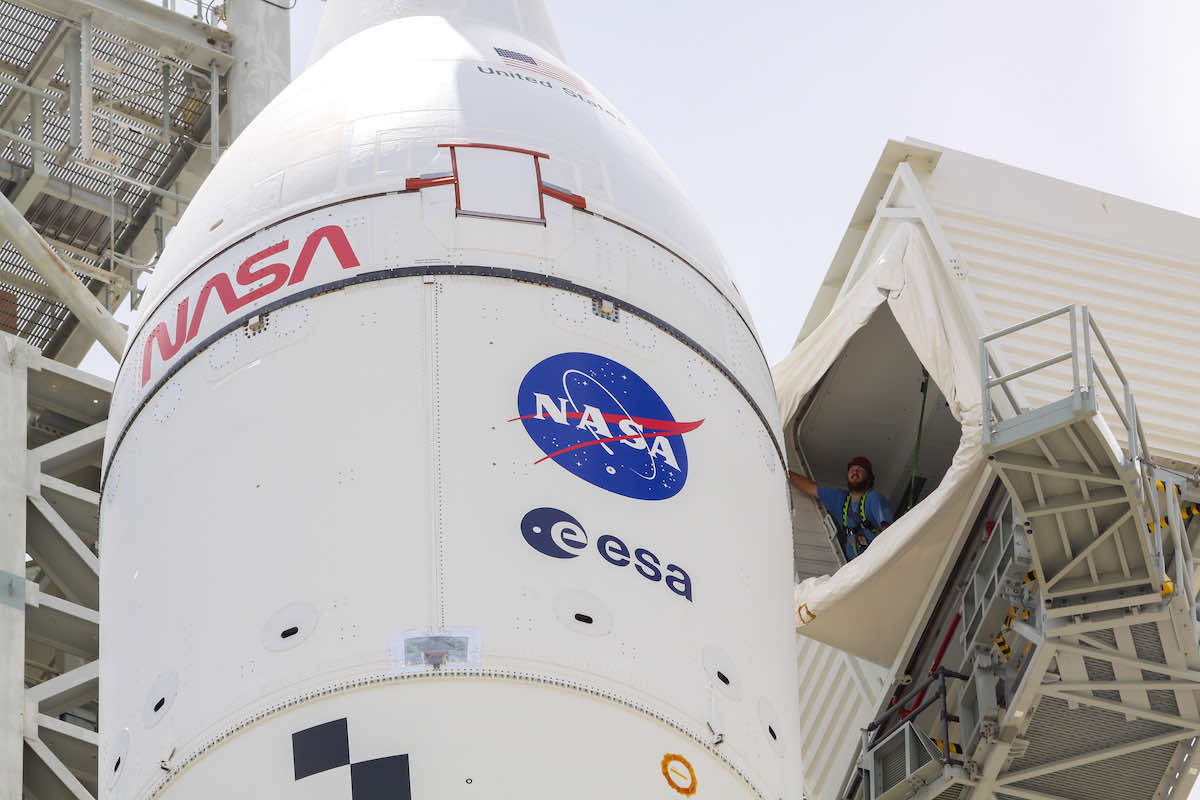STORY WRITTEN FOR CBS NEWS & USED WITH PERMISSION

NASA managers cleared the agency’s leak-bedeviled Artemis moon rocket for the start of another countdown early Monday, but engineers must resolve questions about hurricane-damaged insulation before the huge booster can be cleared for blastoff on an unpiloted moonshot.
After multiple delays due to hydrogen fuel leaks and other glitches, along with the rocket’s nail-biting brush with Hurricane Nicole last week, NASA managers met Sunday to review launch preparations and agreed to start a 47-hour 10-minute countdown at 1:54 a.m. EST Monday. Launch is planned for 1:04 a.m. Wednesday.
But high winds from Nicole caused a thin strip of caulk-like material known as RTV to delaminate and pull away from the base of the Orion crew capsule’s protective nose cone at the top of the rocket.
The material is used to fill in a slight indentation where the fairing attaches to the capsule, minimizing aerodynamic heating during ascent. The fairing fits over the Orion capsule and is jettisoned once the rocket is out of the dense lower atmosphere.
“It was an area that was about 10 feet in length (on the) windward side where the storm blew through,” said mission manager Mike Sarafin. “It is a very, very thin layer of RTV, it’s about point-two inches or less … in thickness.”
Engineers do not have access for repairs at the pad and must develop “flight rationale,” that is, a justification for flying despite the delaminated RTV, in order to proceed with the launch. Managers want to make sure any additional material that pulls away in flight will not impact and damage downstream components.
The issue is reminiscent of a debate following a foam debris incident in October 2002 that dented an electronics assembly at the base of a shuttle booster. In that case, NASA opted to continue flying while engineers developed a fix. Two flights later, another foam impact fatally damaged the shuttle Columbia’s left wing.
Sarafin said the SLS rocket, making an unpiloted test flight, “is a fundamentally different vehicle design.”
“The vehicle in this case is taller, and we do need to take that into account,” he said. “But in terms of hitting critical components … the physics are the same, the analysis is very similar, but where critical components are located (is) just fundamentally different.”
In any case, NASA’s mission management team plans to meet again Monday to review the flight rationale and determine if the countdown can proceed to launch.

If all goes well, the launch team will begin pumping 750,000 gallons of supercold liquid oxygen and hydrogen fuel back into the huge rocket’s tanks starting just before 4 p.m. Tuesday, using revised “kindler, gentler” techniques to control temperatures and minimize sharp pressure jumps to prevent leaks in critical seals.
If any problems do show up, engineers will have two hours to resolve them before the launch window closes.
But the weather is 90 percent “go” and if the fueling procedures work as intended, the 322-foot-tall Space Launch System rocket’s four shuttle main engines and extended strap-on solid-fuel boosters should finally roar to life at 1:04 a.m. Wednesday, opening a new era in American space flight.
Briefly turning night into day as it climbs away atop 8.8 million pounds of thrust, the 5.7-million-pound SLS will quickly accelerate as it consumes propellants and loses weight, passing through the speed of sound in less than one minute.
The two strap-on boosters, which provide the lion’s share of the rocket’s initial thrust, will burn out and fall away about two minutes and 10 seconds after liftoff. The four hydrogen-fueled engines powering the core stage will shut down six minutes later, putting the Orion capsule and the SLS second stage into an initial elliptical orbit.
After raising the low point of the orbit, the single engine powering the Interim Cryogenic Propulsion Stage, or ICPS, will fire again about 90 minutes after launch to break out of Earth orbit and head for the moon. The Orion capsule and its service module will separate a few minutes later to continue the rest of the trip on their own.
The goal of the Artemis 1 mission is to send the Orion spacecraft on a looping trajectory beyond the moon in a critical test of the vehicle’s propulsion, navigation and solar power systems before returning to Earth for a 5,000-degree re-entry and splashdown in the Pacific Ocean west of San Diego.
If the Artemis 1 flight goes well, NASA plans to launch four astronauts atop a second SLS for a lunar shakedown mission — Artemis 2 — in late 2024, followed by an astronaut landing mission in the 2025-26 timeframe.
But that assumes the Artemis 1 flight goes well. As Jim Free, director of exploration systems at NASA Headquarters, put it Friday, “we’re never going to get to Artemis 2 if Artemis 1 isn’t successful.”
from Spaceflight Now https://ift.tt/rTLGQ8E
via World Space Info







0 comments:
Post a Comment